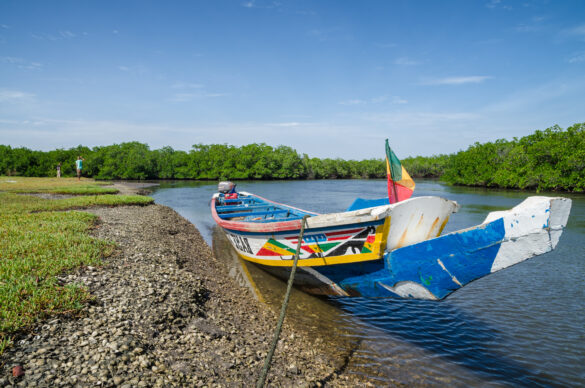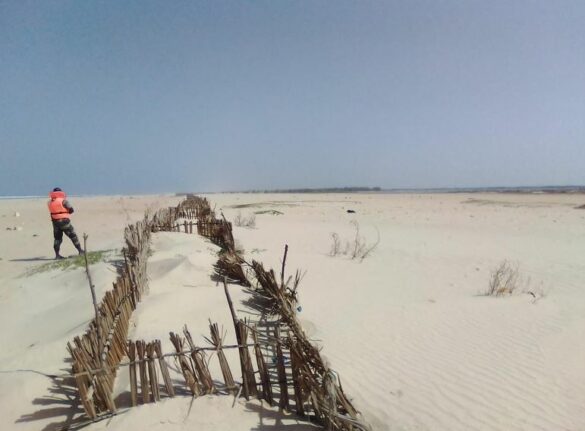Background
The floods at the end of 2003 led the Senegalese authorities to renovate the ‘Langue de Barbarie’, 7 km downstream of Saint-Louis, to facilitate the evacuation of the river flood to the sea. A process of intense erosion followed. Today the width of the ´breach´, which was initially 4 meters, has expanded over the years. The former mouth of the river to the south has been closed, while the excessive extension of the breach causes coastal erosion problems.
In 2012, it led to the abandonment of the village of fishermen of Doun Baba Dieye today engulfed by the sea. As the breach widened and progressed south, other riparian areas were in turn subject to erosion, as the littoral of the village of Pilote Barre.
On the other hand, on the north shore of the “Langue de Barbarie” on the riverside, an important sand inflow phenomenon started, with, in its progression towards the south, leading to new land reclaimed from the sea. These new areas of sandy soil, which is intended to be resolved with re-vegetation, present favourable conditions for the installation of farms since it has subsurface freshwater, attracting the interest of the inhabitants of the neighbouring towns, located on the other side of the river. However, these began to exploit various plots, leading to an uncontrolled occupation of these fragile spaces.
As for the southern end of the “Langue de Barbarie”, it is a rich environment, especially for avifauna, with alternating dunes and small brackish water lagoons. This site is included in the perimeter of the Marine Protected Area of Saint Louis.

Objective
A project to strengthen national biodiversity and environmental initiatives with sustainable conservation strategies, was launched, in the different eco-geographical zones of Senegal, including Saint Louis, as part of a common strategy to protect farming and nature plots against strong swells that threaten to destroy crops and make populations even more vulnerable. In this regard, the capitalization and dissemination of good practices of nature resources management developed by local communities are gathered and aim to respond to the coastal erosion.
Key targets
The challenges and adaptation action needs of the “Langue de Barbarie” are many and varied. These include, among others:
- Protection and restoration of ecosystems and farming plots (socio-economic activities of communities in villages peripheral to the Saint-Louis MPA (Doune Baba DIEYE, Dieul Mbam, Keur Barka, Mbambara, etc.);
- protection of the dunes;
- protection of current forests and trees / reforestation;
- coastal protection.
Main steps
- Construction of typhavelles ( nature fences of Typha australis, an aquatic plant, built to catch the aeolian sand and rebuild dunes) made by women with eco-materials and the GIE – Suxaali Aalam local business enterprise in Bango.
- Installation of typhavelles
- Monitoring and renewal of typhavelles.
Outcomes
The project has played an important role in trapping wind-blown sand and shows that the design works and reached the expectations.
Some of the key results involve:
- The involvement of local micro-enterprises such as the GIE – Suxaali Aalam in Bango in the production of Typha australis palisades (eco-solutions) and the promotion of women’s initiatives.
- Capacity building on soft protection/restoration solutions and ecological monitoring.
- The gained experience in Nature-based solutions.
- Return of the avifauna and natural regeneration of the mangrove on the site linked to the positive modification of the environmental conditions.
- Better control of the site environment with its division into management units and their periodic monitoring and database.
- Development of gardening downstream.
Impacts of good practices
Economic effects:
- Development of farming downstream with ecological solutions.
- Increase in the income of farmers.
- Increase in the number of farmers in the area.
Social effects:
- Strengthening social ties between actors.
- Strengthening the skills of populations and members of the management committee on the restoration of the dune belt and ecosystems.
- Strengthening the capacities local population and actors on soft protection/restoration solutions and ecological monitoring.



